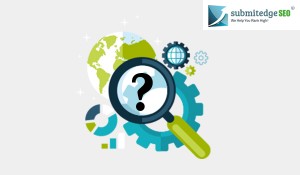Full-funnel strategies for using data and insights to engage your top B2B prospects.
B2B marketers use account-based marketing (ABM) strategies to engage the right decision makers within prospective organizations. These strategies can help marketers gain a competitive edge when they’re run with the right data.
Leading with awareness
The first thing to consider in their ABM strategy is the brand presence of their own organization.
“I think this is really crucial because you really need to have a baseline level of awareness in the marketplace,” said Megan Creighton, head of digital strategy for The Ricciardi Group, a boutique B2B marketing agency, who spoke at The MarTech Conference. “People really need to know who you are and you need to be part of the conversation in order for any of your downstream programs to really thrive.”
Your brand should have a foundational awareness among your business’s top prospects and the key contacts within those organizations. When you engage your ideal customer, they should know about you.
“In order for your message to be well received, I think that the person receiving it has to really feel that you’re a credible person to deliver that message in order for them to kind of buy,” said Creighton. “So, being able to bolster your position in the marketplace is what is going to make your thought leadership resonate and what’s going to make that person on the receiving end feel more comfortable about interacting with your brand and wanting to go on that buying journey process with your brand.”
Brand awareness at the top of the marketing funnel should flow seamlessly into deeper forms of engagement, nurturing audiences and, ultimately, driving sales.
“Once we raise the profile of the brand and had that baseline awareness, then we are able to get hyper-targeted from there, which is the fun part,” Creighton said.
Gathering intelligence from marketing campaigns
Lower-funnel engagements with key prospects and existing customers yield important data that drives meaningful interactions. B2B brands can also gain important intelligence from top-funnel marketing campaigns around brand awareness.
To get the most out of any engagement with a prospect, the message has to resonate. So, marketers should use the data they have to create messages that resonate.
“Accounts are made up of people who are making the decisions and they have preferences on how they want to be [reached],” said Creighton.
If your brand is looking to break into a new market, or gain more of a hold on an existing market, you should look at data about what channels are most successful in reaching accounts in that market.
Content that faces accounts in this region should also show awareness of the market in order to create a personal touch. This applies to website content and social media messages, as well as in emails and other personal communications.
Researching the market can also help identify key prospects. B2B brands should consider content syndication programs and surveys with customized questions that provide insights when prospects engage with this content.
“Identify in that specific geography who was really showing that they were actively researching and showing a high intent for a solution that the brand is offering,” Creighton said.
Prioritizing data insights
When your brand has moved on from the awareness phase and has gained some insights from market research, it’s time to prioritize accounts and find out more about their businesses.
“Now that we’ve identified that [accounts] are also expressing a level of intent, we’re understanding that they may be more likely to give us more information,” said Creighton.
Important data at this stage includes pain points that businesses are experiencing, or the specific products or capabilities the prospect is looking to buy.
Deeper market analysis can also be prioritized. For instance, sales for a product or service related to your business’s offerings could be on the rise. Knowing who among your prospects is showing intent for the related products will help you prioritize the prospects your business should target.
Prioritizing the right data that comes from customer interactions and surveys will help build relevant content for nurture campaigns and other communications. Marketers can also use this prioritized data for audience segmentation.
By making your marketing strategy more data-driven, you can implement an ABM strategy that is personalized and active on the right channels in an increasingly cluttered digital environment.
The post 3 best practices for B2B ABM marketers appeared first on MarTech.
MarTech(19)
Report Post



